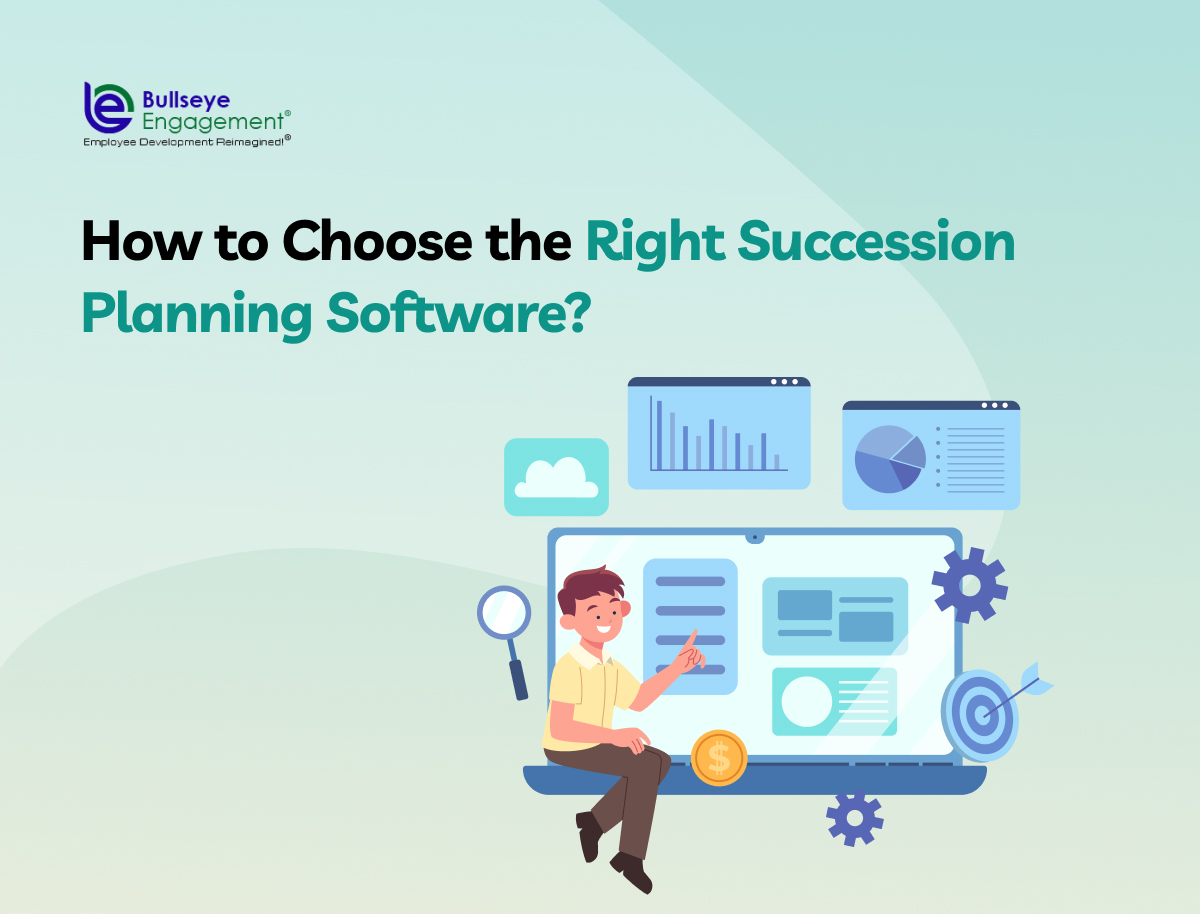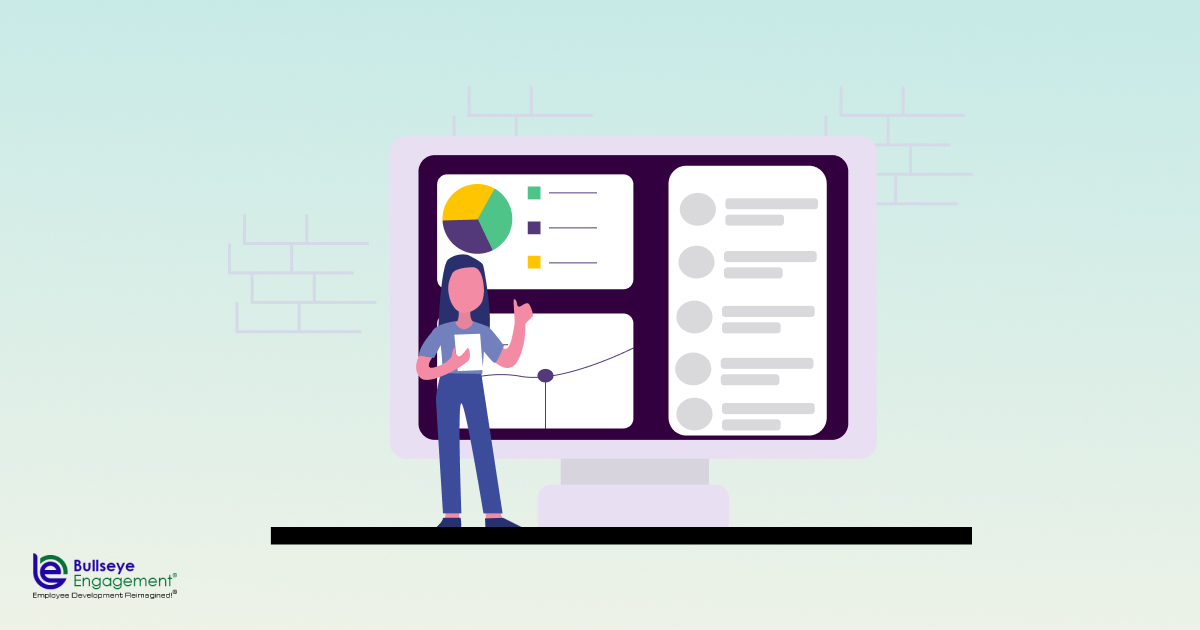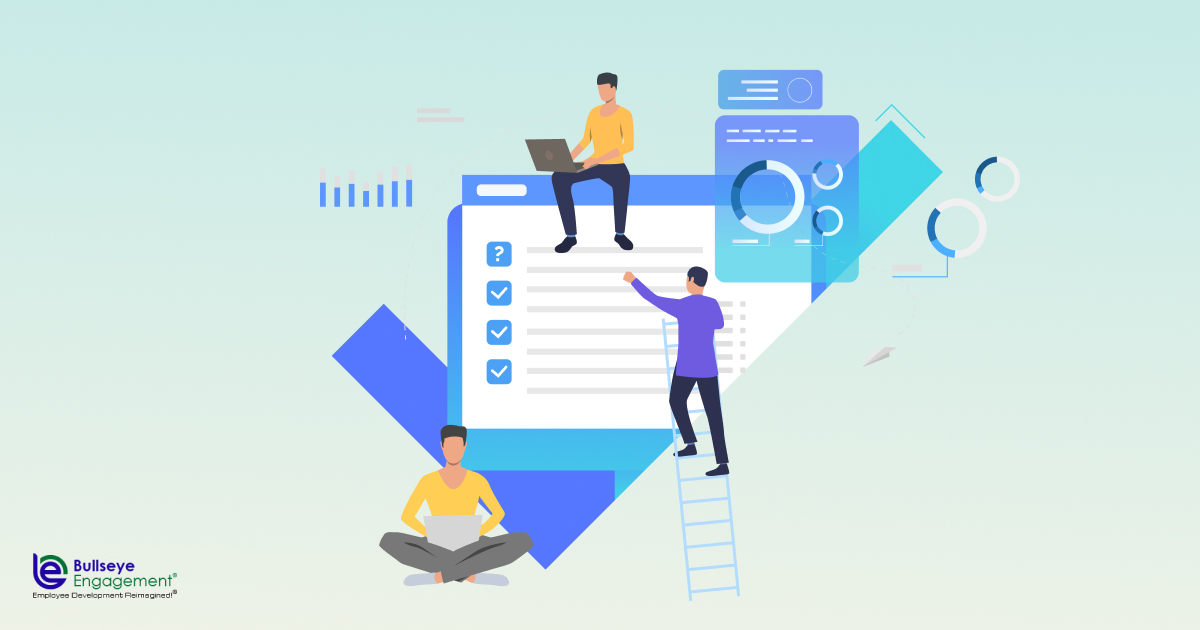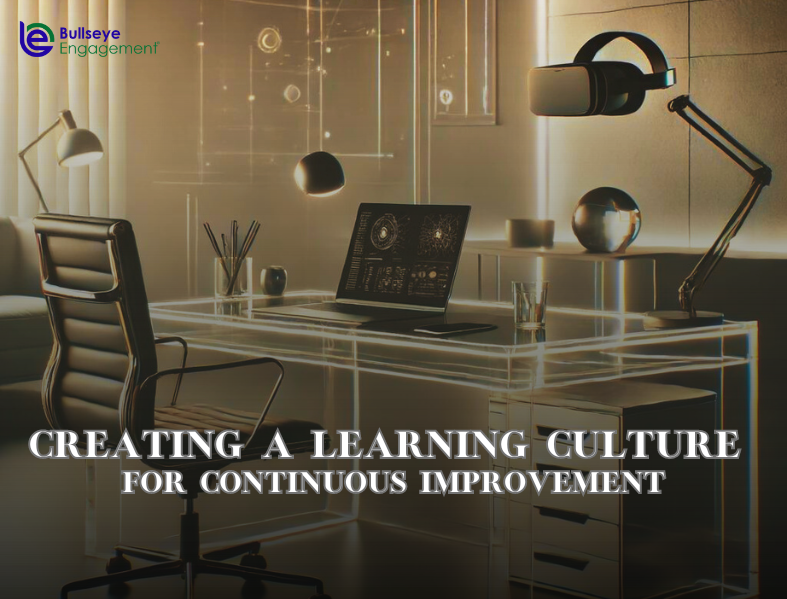In the fast-paced and dynamic landscape of business, one constant remains change. Whether it’s due to retirement, promotion, or unforeseen circumstances, the need for seamless transitions within an organization is a reality every company must face. This is where succession planning steps in – a strategic process that identifies and prepares individuals to fill key roles within a company, ensuring the continuity of operations and the preservation of institutional knowledge.
However, as organizations grow in complexity and size, managing succession planning manually becomes increasingly challenging. This is where technology comes to the rescue, offering a range of sophisticated tools designed to streamline and enhance the succession planning process. Among these tools, succession planning software emerges as a crucial asset for modern businesses aiming to navigate the intricacies of leadership transition with efficiency and precision.
In this blog post, we will dive into the world of succession planning software, exploring its significance, benefits, and most importantly, how to choose the right one for your organization’s unique needs. Whether you’re a small startup with ambitious growth plans or a well-established enterprise, the right succession planning software can mean the difference between a seamless transition and a disruptive leadership gap.
Join us as we uncover the key considerations, features, and best practices for selecting the perfect succession planning software. From evaluating scalability and user-friendliness to understanding integration capabilities and data security, we’ll equip you with the insights you need to make an informed decision. Let’s embark on a journey to discover how BullseyeEngagement‘s expertise can guide you toward choosing the right succession planning software to secure your company’s future success.
Table of Content
- Understanding Succession Planning Software
- What is Succession Planning Software?
- Key Features and Functionalities
- Assessing Your Organization’s Needs
- Factors to Consider When Choosing Succession Planning Software
- Evaluating Different Succession Planning Software Options
- Making the Final Decision
- Implementing Succession Planning Software
- Ensuring Successful Utilization of the Software
- Conclusion
Understanding Succession Planning Software
In the ever-evolving landscape of business, one of the most critical tasks an organization faces is ensuring a smooth transition of leadership and talent. Succession planning has become an essential strategic initiative, enabling companies to identify and develop high-potential employees who can step into key roles when the need arises. As the complexity of modern businesses continues to increase, so does the need for effective succession planning tools. This is where succession planning software comes into play, revolutionizing the way companies approach talent management and leadership continuity.
What is Succession Planning Software?
Succession planning software is a specialized tool designed to facilitate and optimize the succession planning process within organizations. It serves as a digital platform that enables HR professionals and leadership teams to identify, assess, develop, and track potential successors for critical roles. By centralizing data, automating workflows, and providing comprehensive insights, this software empowers companies to proactively address leadership gaps and ensure a seamless transition of responsibilities.
Key Features and Functionalities
1. Talent Pool Management
Succession planning software allows you to create a comprehensive repository of potential successors and high-potential employees. This repository includes information such as skills, competencies, performance data, and career aspirations. This feature enables HR professionals and managers to make informed decisions about talent development and promotion.
2. Skills Assessment
One of the essential aspects of succession planning is evaluating the skills and competencies of potential successors. The software provides tools to assess the strengths and areas of improvement for each individual, helping organizations identify skill gaps and create targeted development plans.
3. Performance Analytics
Succession planning software often integrates with performance management systems to provide a holistic view of an employee’s performance history. This data aids in identifying top performers and individuals who consistently deliver results, guiding the succession planning process based on concrete evidence.
4. Scenario Planning
Effective succession planning involves considering multiple scenarios, such as sudden departures or anticipated promotions. The software enables users to model various scenarios and evaluate the readiness of potential successors under different circumstances.
5. Development Plans
Once potential successors are identified, the software assists in creating tailored development plans. These plans may include training programs, mentorship opportunities, and skill-building initiatives aimed at preparing individuals for future leadership roles.
6. Succession Tracking
The software provides tools to monitor the progress and development of potential successors over time. It enables regular check-ins, progress assessments, and updates to ensure that individuals are on track for assuming their designated roles.
7. Integration Capabilities
Succession planning software often integrates with other HR systems, such as human capital management (HCM) and applicant tracking systems (ATS). This integration ensures a seamless flow of data and reduces redundancy in processes.
8. Data Security
Given the sensitive nature of succession planning data, robust security measures are essential. Look for software that offers encryption, role-based access controls, and compliance with data protection regulations.
Assessing Your Organization’s Needs
Before delving into the sea of succession planning software options, it’s essential to embark on a journey of self-discovery within your organization. This phase involves a comprehensive assessment of your company’s unique needs, objectives, and existing processes. Here are three critical aspects to consider:
1. Identifying the Purpose of Implementing Succession Planning Software
Every organization has distinct reasons for seeking succession planning software. Whether it’s to ensure a smooth leadership transition, mitigate the risk of talent gaps, or foster employee growth and development, understanding your primary goals will steer your software selection process. Are you aiming to enhance transparency, track employee performance, or improve the alignment between your talent pool and strategic objectives? Clearly defining your purpose will serve as the North Star guiding your software choices.
2. Understanding the Current Succession Planning Process
Reflecting on your current succession planning practices provides invaluable insights into areas that require improvement and the functionalities that would best compliment your workflow. Take stock of how your organization identifies high-potential employees, assesses their skills, and grooms them for leadership positions. Identify pain points, bottlenecks, and areas where software integration could create synergy. This introspection will empower you to choose a software solution that addresses your specific pain points and aligns with your established processes.
3. Key Requirements and Expectations from the Software
Succession planning software can offer an array of features, from talent identification and performance tracking to scenario modeling and analytics. As you embark on your software selection journey, outline your non-negotiable requirements and must-have functionalities. Does your organization need a user-friendly interface, robust reporting capabilities, or integration with other HR systems? Clearly articulating your expectations will help you filter through options and prioritize software solutions that cater to your immediate needs and future growth.
Factors to Consider When Choosing Succession Planning Software
Selecting the right succession planning software for your organization is a decision that warrants careful consideration. As you embark on this journey to enhance your leadership transition processes, there are several critical factors that should guide your decision-making process. Here, we delve into the key elements you should evaluate when choosing the perfect succession planning software through the lens of BullseyeEngagement’s expertise
1. Scalability and Flexibility
Business growth is the ultimate goal for any organization. As you expand, your succession planning needs will evolve as well. It’s crucial to choose software that can scale alongside your company’s growth trajectory. Look for solutions that accommodate changes in the number of positions, employees, and departments, ensuring that your chosen software remains a valuable asset even as your organization evolves.
2. User-Friendly Interface and Ease of Implementation
Complex software can lead to resistance among users and hinder successful adoption. Opt for a succession planning tool with an intuitive interface that makes navigation and data input straightforward. A software solution that is easy to implement will minimize disruption during the transition phase, enabling your HR team to focus on driving value rather than dealing with technical challenges.
3. Integration with Existing HR Software and Systems
Your organization likely relies on a suite of HR software and systems to manage various aspects of human resources. When selecting succession planning software, compatibility with your existing tools is paramount. Ensure that the software can seamlessly integrate with your current HR ecosystem to avoid duplicating efforts and to maintain a unified data environment.
4. Security and Data Privacy Measures
The sensitive nature of succession planning data requires robust security measures. Prioritize software solutions that offer stringent data protection protocols, including encryption, access controls, and compliance with relevant regulations such as GDPR or HIPAA. Protecting the privacy of your employees and the confidentiality of succession plans is non-negotiable.
5. Customization Options
No two organizations are exactly alike, and your succession planning software should reflect your unique needs. Look for software that offers customization options to tailor the solution to your organization’s specific processes, roles, and terminology. A one-size-fits-all approach might not effectively address your intricacies, so seek a solution that can be molded to match your requirements.
6. Customer Support and Training
The journey doesn’t end once the software is implemented. Adequate customer support and training are essential for the successful use of the software. Consider software providers that offer comprehensive support, including training resources, user documentation, and responsive customer service. A reliable support system can alleviate challenges and ensure your team maximizes the software’s potential.
7. Total Cost of Ownership (TCO)
Investing in succession planning software involves more than just the initial purchase cost. Consider the total cost of ownership over the software’s lifecycle. This includes factors such as licensing fees, implementation costs, ongoing maintenance, and potential upgrades. A thorough understanding of the TCO will help you make an informed financial decision.
Evaluating Different Succession Planning Software Options
Navigating the realm of succession planning software requires a thoughtful and systematic approach. As organizations increasingly recognize the need for efficient leadership transitions, the market has responded with a plethora of software solutions tailored to meet these demands. In this section, we will delve into the key factors to consider when evaluating different succession planning software options, ensuring that you find the perfect fit for your organization’s requirements.
1. Scalability and Flexibility
Navigating the realm of succession planning software requires a thoughtful and systematic approach. As organizations increasingly recognize the need for efficient leadership transitions, the market has responded with a plethora of software solutions tailored to meet these demands. In this section, we will delve into the key factors to consider when evaluating different succession planning software options, ensuring that you find the perfect fit for your organization’s requirements.
2. Researching Available Software in the Market
A thorough research phase is essential to understand the range of succession planning software available in the market. Take the time to explore different options, understanding their core features and functionalities. Look into whether they offer additional modules or integration capabilities with other HR and talent management systems. This research phase will provide you with a comprehensive overview of the landscape, helping you make an informed shortlist of potential solutions.
3. Comparing Features and Functionality
Each succession planning software comes with its unique set of features and capabilities. To make an accurate assessment, create a checklist of must-have features and desired functionalities. This could include features like competency assessments, performance analytics, development plans, and talent pool visibility. Compare these features across the software options you’re considering, and prioritize those that align closely with your organization’s needs and goals.
4. Reading User Reviews and Testimonials
One of the best ways to gain insights into the practical use of a succession planning software is by reading user reviews and testimonials. Platforms like BullseyeEngagement often provide testimonials from satisfied clients who have implemented their software successfully. Additionally, consider checking third-party review websites and forums to get a balanced perspective on the software’s strengths and weaknesses. Real-world experiences from users can offer valuable insights into the software’s usability and effectiveness.
5. Seeking Recommendations from Peers and Industry Experts
Leveraging the knowledge of your peers and industry experts can provide a wealth of information when selecting succession planning software. Reach out to colleagues within your network who have experience with similar software, and inquire about their opinions and recommendations. Additionally, attending industry conferences or webinars can be an opportunity to gather insights from experts who have a deep understanding of HR technology trends and best practices.
Making the Final Decision
As you navigate the intricate process of choosing the right succession planning software, you’ll eventually reach the pivotal moment of making the final decision. This stage is the culmination of your research, analysis, and careful consideration of various software solutions. To ensure that you’re making a decision that aligns with your organization’s goals and needs, there are several crucial steps to follow.
Step 1: Creating a Shortlist of Potential Software Solutions
After thorough research, you should have identified several succession planning software solutions that seem promising. Now, it’s time to create a shortlist of these options. Consider factors such as the software’s features, customization capabilities, user interface, and integration possibilities. Narrow down your list to the solutions that best match your organization’s requirements.
Step 2: Conducting Demos and Trials
Once you have your shortlist, the next step is to dive deeper into each solution by requesting demos and trials. Demos provide an opportunity to see the software in action, understand its user experience, and assess its user-friendliness. Trials, on the other hand, allow you to test the software firsthand with your team, evaluating its functionality and compatibility with your existing systems.
During demos and trials, pay attention to how intuitive the software is to use, whether it offers the features you need, and if it aligns with your organization’s workflow. This hands-on experience will give you valuable insights into whether the software is a good fit for your succession planning process.
Step 3: Involving Key Stakeholders in the Decision-Making Process
Selecting succession planning software is not a decision to be made in isolation. Involve key stakeholders from various departments, including HR, IT, and senior management. Each stakeholder’s perspective is valuable, as they will bring different insights and priorities to the table. Collaborative decision-making ensures that the chosen software meets the needs of all relevant parties and promotes a smoother implementation process.
Step 4: Considering Long-Term Business Needs and Growth Potential
While evaluating potential solutions, it’s crucial to keep your organization’s long-term business needs and growth potential in mind. The succession planning software you choose should be scalable, adaptable, and capable of accommodating your company’s evolving requirements. Consider how well the software can support your organization’s expansion, changing workforce dynamics, and strategic goals over time.
Additionally, inquire about the software provider’s commitment to updates, enhancements, and customer support. A software solution that grows with your organization and stays up-to-date with industry trends will provide a higher return on investment in the long run
Implementing Succession Planning Software
Selecting the right succession planning software is only the first step towards transforming your organization’s succession strategy. The true value of such software lies in its effective implementation, ensuring that it seamlessly integrates into your existing processes and maximizes its benefits. In this section, we’ll delve into the essential aspects of implementing succession planning software and guide you through each stage of the process.
Developing an Implementation Plan
A well-structured implementation plan serves as the foundation for a successful adoption of succession planning software. Start by identifying key stakeholders who will be involved in the process, such as HR managers, IT personnel, and department heads. Collaboratively outline the goals and objectives of implementing the software, aligning them with your organization’s broader strategic vision.
Your implementation plan should encompass a timeline detailing various phases, milestones, and deadlines. This plan helps keep the implementation on track and minimizes disruption to daily operations. Clear communication is paramount during this stage, as it ensures that everyone understands their roles, responsibilities, and the overall purpose of the transition.
Data Migration and System Integration
Efficient data migration and seamless integration are critical components of a successful succession planning software implementation. Evaluate the compatibility of the new software with your existing HR systems and databases. Identify the data that needs to be migrated – from employee profiles and performance history to job descriptions and competency frameworks.
Collaborate with your IT team or external vendors to ensure a smooth transfer of data. Verify the accuracy of migrated information and perform data integrity checks to avoid any discrepancies that could hinder the software’s functionality. Integration with existing tools, such as performance management systems and talent databases, is also essential for a unified approach to employee development and succession planning.
Training and Onboarding of Employees
No software implementation is complete without comprehensive training and onboarding for your employees. Provide tailored training sessions that cater to various user groups, including HR professionals, managers, and employees. This training should cover the software’s features, functionalities, and best practices for maximizing its potential.
Consider offering both initial training sessions and ongoing support to address any questions or challenges that arise. The goal is to empower your team to navigate the software confidently and use it effectively to identify high-potential employees, assess skill gaps, and create development plans.
Testing and Quality Assurance
Before fully rolling out the succession planning software across your organization, rigorous testing and quality assurance are essential. Establish a testing environment where you can simulate real-world scenarios and workflows to ensure the software’s performance, functionality, and security.
Involve a group of pilot users who can provide feedback and identify any issues that might have been overlooked during development. This stage allows you to make necessary adjustments and improvements before the software is deployed organization-wide.
Ensuring Successful Utilization of the Software
Selecting the right succession planning software is just the first step towards streamlining your organization’s leadership transition process. To truly maximize the benefits of your chosen software solution, you need to focus on its successful implementation, adoption, and ongoing utilization. Here are three essential strategies to ensure your succession planning software becomes an indispensable tool within your organization:
1. Promoting User Engagement
The success of any software hinges on user engagement. Your chosen succession planning software should not only be intuitive but also capable of engaging users at every level of your organization. To achieve this, consider software that offers a user-friendly interface, comprehensive training resources, and a seamless onboarding process. When employees find the software easy to navigate and understand, they’re more likely to actively participate in the succession planning process.
Encourage collaboration and communication among users through features like discussion boards, chat functions, and collaborative document sharing. These interactive elements can foster a sense of ownership and involvement among employees, leading to a more effective succession planning process overall.
2. Tracking and Measuring Key Performance Metrics
Succession planning isn’t just about preparing for future leadership roles; it’s also about measuring the effectiveness of your strategies. A robust succession planning software should offer tools to track and measure key performance metrics related to your succession planning initiatives. This could include tracking the development of potential candidates, monitoring their progress against predefined milestones, and assessing the success rate of your leadership transitions.
By analyzing these metrics, you can identify areas of improvement, recognize patterns of success, and make data-driven decisions to refine your succession planning strategies. Look for software that provides customizable reporting and analytics capabilities to ensure you’re obtaining valuable insights into your succession planning efforts.
3. Continuous Improvement and Optimization
Succession planning is not a one-time event; it’s an ongoing process that requires continuous refinement. Your chosen software should enable you to adapt to changing organizational needs and market dynamics. Seek software that supports scalability and customization, allowing you to modify your succession plans and criteria as your business evolves.
Regularly gather feedback from users and stakeholders to identify pain points and areas where the software could be enhanced. Many modern succession planning software solutions offer regular updates and feature releases based on user feedback and industry best practices. By actively participating in the software’s evolution, you can ensure that it remains a valuable asset to your organization’s long-term success.
Conclusion
As we draw our exploration of selecting the right succession planning software to a close, it’s evident that this decision holds significant weight in shaping the future of any organization. BullseyeEngagement has been at the forefront of aiding companies in their pursuit of efficient and effective succession planning, and the journey to finding the ideal software has been illuminated by key insights and considerations.
By evaluating scalability, integration capabilities, user-friendliness, and data security, you’re not just choosing software – you’re laying the groundwork for a smoother transition of leadership, safeguarding valuable institutional knowledge, and positioning your company for continued success.Our commitment to providing the most insightful and comprehensive guidance empowers you to make the right choice, fostering a future where leadership transitions are not obstacles but opportunities for growth.


























